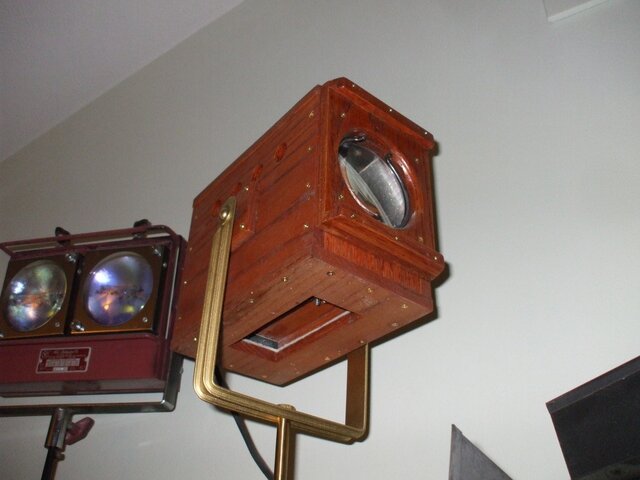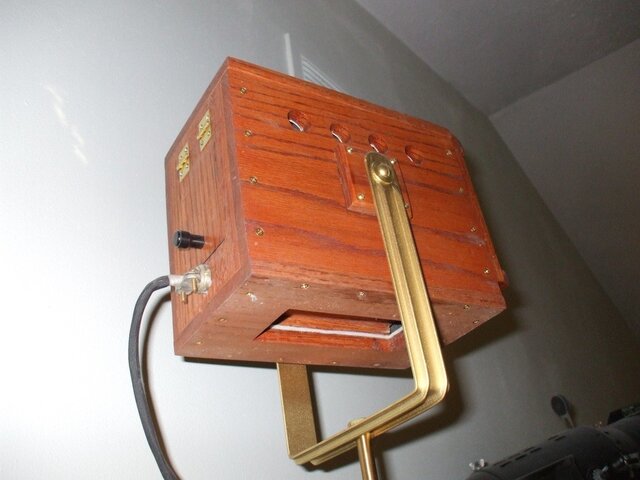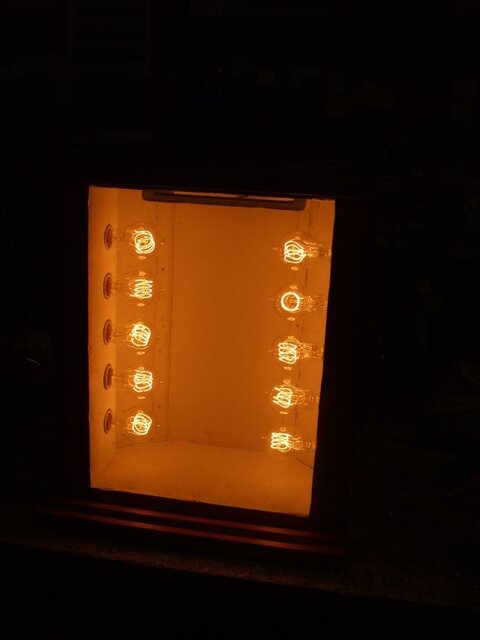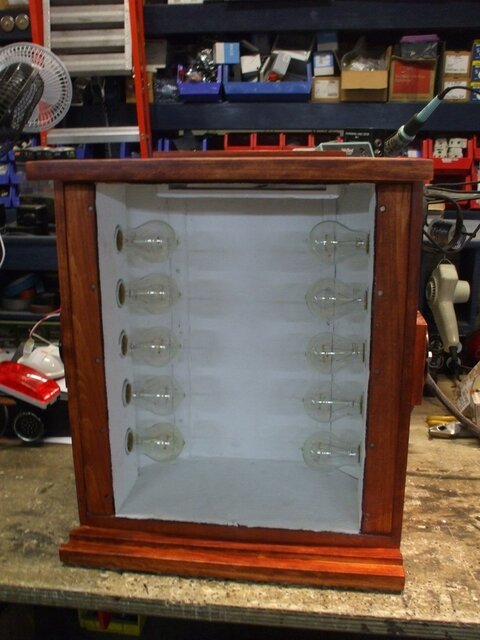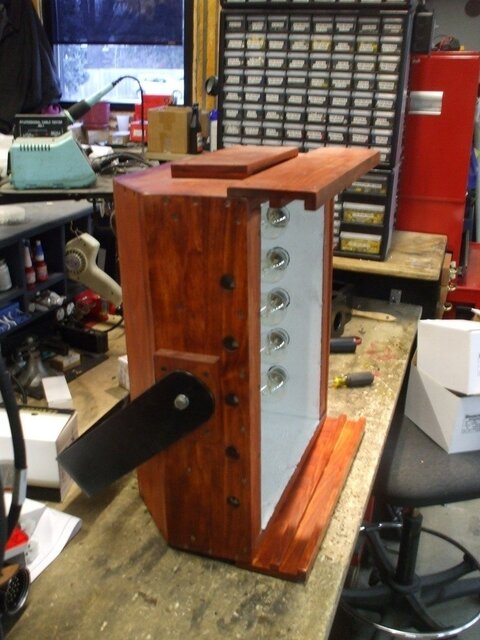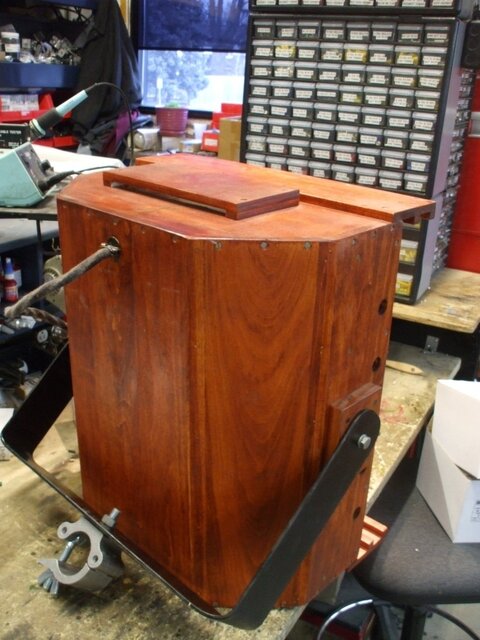Time to get out the
lathe. I'm gonna turn me a
360Q!
Made a 1/4" mistake in re-doubling the math on the box spot - don’t
bench focus in already done the spacer and doing it a second time later. Second one will work properly. Fun project and Wifie won’t let it leave the
house in liking it.
Bunch light - took the dimensions off a 1Kw large Olivalitte lamp
fixture I have in making it larger in depth than this version will have been. Rounded edges and overall look is more an artistic take on it than realistic factual
fixture. Same concept but in this case in following Fuch’s it was more for expiation during a tour to students purposes.
Never gonna find an actual
bunch light and if board at work we might make some within the specs to add to the museum - lots of versions I would like to create, more about explaining purposes for how 1910 was so important for the nitrogen gas addition to the before that 100w max wattage vacuum tube lamp. (Thus a bunch of them. Had for
filament sources bunch lights, boarders, flood, spot, box spot and PC
fixture to choose from back than.) Bunch lights if not by WWI, by at least WWII were I think recycled and now gone. Doubt anyone can find a real example - even if in the books. Faced with that, the “
Stage Lighting”
manual in how to
build one = expiation and even if it wouldn’t be stained for other than display purposes, it more fits given it is now display for museum.
That was a fun project also - both on my list to
build again once I get a chance. Too many old lights to
restore at the moment for that chance.
On other projects, did start making a few Cyberlight 2.0 oak fixtures last year. I’m not a moving light guy and while I had color changing MR-16 source and even
circuit board and mirror done... didn’t work out wall given the spring retracting
solenoid I chose for the project. Still working on them and might abandon the whole inspection mirror moving mirror concept in making it at least function - still in the works. Once close to done is scaling the Cyber 2.0 graphics onto the oak
fixture. Posted before about this project.
Yea..
Half coupler on it - bigger shame is out of room on a 70' pipe with other gear on stands that there at 16" on center above and below hung there is no room to hang it or a
stock pile of other gear. Just added a
PAR 38 above to the hang - room for it. $20.00 for a soup can
Par 38
fixture that is original from the 60's in home
build fixture. Even has the lumber yard sticker the
yoke was bought from on it’s
yoke. True antique from the 60's in prime condition. Need more room to display the gear - after that, less concerned about clamps in doing accurate where possible but in ready to go on a show and rigged for hang... I’m mostly good in presentation.
Nothing like building from scratch out of lumber - studying and figuring out the cooling vent
system as Fuch’s very well lays out, and than making one. Not an easy project for students though - making it well is expert
level - plus the heat shielding is very expensive.
Could learn a lot more on
fixture theory in having them service
call current gear, than old gear and learning the details and concepts in advancement. Also that theory
bench focus once thought done. Slave labor is good thing in me at times getting people in to work on their own gear and learn from in doing so.
Splitting a
360Q down the center would be really cool - I would go fiber abrasive grinder wheel, but do show pictures. Already burned out and replaced brushes on many the Dremmel tool - at work even bought an industrial Dremmel like tool with more
power due to how many I have burned out. Careful with them in often if what you want to do, a more powerful tool might do for the bulk of the work.
Good to inspire concepts in the industry - we all have a responsibility to inspire, and when board to challenge ourselves. As above with my lumber fixtures... concepts always been out there, where is your’s in stuff to do when board?



